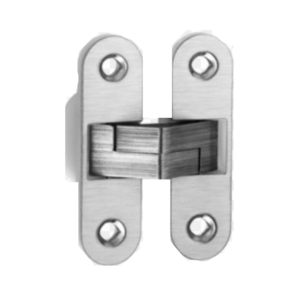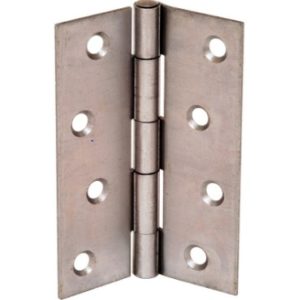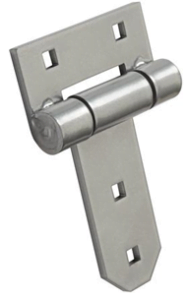What are Hinges?
A hinge is a mechanical bearing that links two solid objects, allowing only a limited angle of rotation between them. Two objects linked by an ideal hinge rotate relative to each other about a fixed axis of rotation: all other translations or rotations being prevented, and thus a hinge has one degree of freedom. Hinges may be made of flexible material or of moving components. All types of hinges are available here.
Hinges can be made of various materials, be it flexible or comprising of moving components. They are available in different finishes as well to suit the purpose and color options but antiqued copper, chrome, brass and black are the common ones.
Where are hinges used?
We cannot imagine a life today without hinges .
Hinges are be used at various places like doors, windows, cabinets, piano and almost all types of general furniture.
Hinges are so common in use that they are used in solar panels on space-craft to lids on music boxes and millions of other items, in-between. Hinges have been in use for thousands of years and have evolved from very simplistic to extremely specialized – used in areas of aerospace, military, computing, travel and more. The everyday benefits from using hinges are many, varied and virtually countless.
And based on its type of application the various types of hinges are categorized.
Types of Hinges
1. Bi-fold Hinges: Bi-Fold Hinges use two hinges of different lengths that are multi-leaf which allows the door or panels to open in both or same direction. Bi-fold Hinges have multiple pivot points that allows tighter swing with greater degree of travel.
2. Butt Hinges: These hinges are the most commonly used . You will find these hinges at your home. A large variety of hinges can be found at stores.Butt Hinges can use either a central pin or ball joint to move. Though the design of butt hinge is simple, but the simple design makes the but hinges the most reliable type of hinges to install and also the type of hinge which will last for years . Depending on the place the hinge has to be fitted and considering the cost of each material hinges can be selected. There are several types of Butt Hinges. Some of the most popular Butt Hinges are mentioned below.
- Rising Butt Hinge
- Fir Butt Hinge
3. Butterfly Hinges: Butterfly Hinges are designed to look like Butterfly. They work as lightweight, decorative hinges just like butterflies. They are mainly used in decorative containers like jewellery boxes, cupboards and decorative containers.
4. T-Hinges: As the name says , T-hinges are in the shape of a T; and the horizontal part of the T is positioned on the door frame; and the vertical portion is screwed to the door. Though T-hinges can be used for ornamental purposes, this type of hinge is more about function than about good looks. T-hinges are flush-mounted and are typically used on garage doors, chest lids and other utilitarian items.T-hinges are simple, durable and highly-functional, and are one of the easiest hinges to install since they are flush-mounted. These type of hinge spreads the weight of the door over a larger area allowing for greater control.
5. Continuous Hinges: Continuous Hinges are knows as Piano Hinges also. They can be used in any setting requiring a hinge of specific length. These are available in different lengths made in brass and steel.
6. Concealed Hinges: Concealed Hinges are also known as invisible hinges. They are named so as you will only see the surface of the door.The two parts of concealed hinges are pivots and brackets. The most popular sizes are normally 26mm and 35mm. These type of hinges are used where not too much of timber to fix or the cupboard door is thin.

7. Flush Hinges: This type of hinge does not require a recess to be cut. They are not as strong as butt hinges but can be used for light-weight doors and small box construction.
The advantage of flush hinges is that they do not need to be sunk into the door or door frame unlike a butt hinge. They are screwed to the surfaces of the connected parts and when closed the inner leaf fits snugly into the outer leaf. Also, you don’t need to create a mortise like in Butt Hinge to allow cabinet door to close correctly.
The fact that these are light in weight compared to Butt Hinges, thus, they are less durable and cannot be used for heavy furniture. They are best suited for light-weight cabinets, windows, cupboards and doors.
Factors you need to keep in mind while looking for types of hinges.
- You need to first decide for what article are you searching the Hinge for.
- The next to keep in mind is that what is the length of hinge you are searching for.
- After deciding the length, you need to see that how heavy is the material on which you are fixing the hinge on.
- Always look for hinges that are anti-corrosive.
- Lastly you need to see whether it complements the look of the material you are fixing it on.






